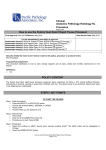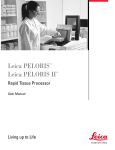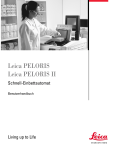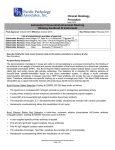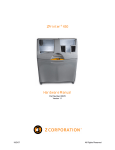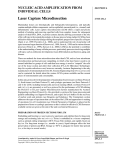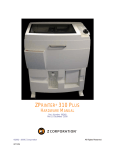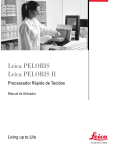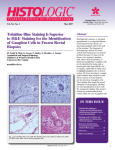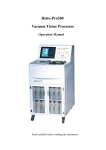Download How to use the Peloris Dual Retort Rapid Tissue Processor
Transcript
Clinical Anatomic Pathology Histology RL Procedure histo17.01 How to use the Peloris Dual Retort Rapid Tissue Processor Final Approval: May 2010 Effective: May 2010 Next Review Date: May 2012 List all stakeholder(s) and dates of approval: Revised Stakeholder Name(s): Shelly M. Siegel HT Date: 8/25/2010 Reviewed Revised Stakeholder Name(s): Mark Magilner MD Date: 8/2710 Reviewed Revised Stakeholder Name(s): Shelly Siegel Date: 5/3/11 Reviewed Revised Stakeholder Name(s): Date: Reviewed Revised Stakeholder Name(s): Date: Reviewed Describe briefly the most recent revision made to this policy, procedure or protocol & why: New Procedure Purpose/Policy Statement: This procedure addresses on how to start, change reagents and do daily, weekly and monthly maintenance on the Peloris. Definitions: • n/a POLICY CONTENT The Peloris dual retort rapid tissue processor preserves tissue specimens by fixing in 10% neutral buffered formalin, dehydrating in alcohols, clearing in xylene then infiltrates with wax. This allows tissue to be sectioned, stained and ready to be diagnosed by a pathologist. STEPS / KEY POINTS TO START THE PELORIS Step 1. Load the protocol • Press the SELECT or PROTOCOL button • Choose the protocol SMALL, MEDIUM, or LARGE • Press LOAD • Pick the retort you are loading A or B Step 2. Start the Run • Press RUN • Enter the # of CASSETTES, Press OK • Prompts you to load, Press DONE Step 3. Scheduling • Select the endtime to ASAP, should read- required endtime ASAP. The ASAP button will be highlighted in Orange. • Press the GREEN START button. How to use the Peloris Dual Retort Rapid Tissue Processor Page 1 of 3 REAGENT/WAX REPLACEMENT Replace reagent/wax when chamber appears striped on the status screen or when warned at protocol start. (Concentration threshold exceeded for last step). Document all reagent/wax changes on the equipment maintenance form. REAGENT Step 1. Pull reagent bottle from peloris Step 2. Empty according to chemical waste management. Down the drain or in a labeled waste container to recycle or waste. Step 3. Push the bottle back into the same station • State FULL • Press RESET WAX Step 1. Connect wax waste line hose • Insert or rest the hose into container or funnel. Step 2. Open the REAGENT tab then press REMOTE FILL/DRAIN • Select WAX WASTE and the wax chamber to drain, then click DRAIN TO WASTE • Monitor drain progress, wait until notified of completion. Step 3. Add new wax • Clean the wax bath using gauze. • Add molten paraffin to MAX line. Do not over fill. Step 4. Update Station State • Open the REAGENT tab then find STATIONS • Press the WAX CHAMBER • Press the DRY state on the wax chamber that was emptied • Press FULL MAINTENANCE DAILY • • • • • Clean gasket seal on retort with 70-100% alcohol. Make sure it is free of paraffin. Clean sensors with 70-100% alcohol. Check reagent/wax levels. Make sure they are not over or under the MAX line. Clean the top surface of the retort lids and handle. Clean touch screen WEEKLY • Check condensation bottle, empty if needed. QUARTERLY • Change carbon filter (JAN, APR, JUL, OCT) • Clean reagent bottle Equipment/Supplies (If Applicable): Alcohol graded reagent Xylene PPE- gloves, goggles, apron or face mask Funnel Paraplast X-tra How to use the Peloris Dual Retort Rapid Tissue Processor Page 2 of 3 Cassette basket Gauze, paper towel 10% NB formalin Form Name & Number or Attachment Name (If Applicable): Histo17 Author Position: Lead Histologist Review/Revision Authority (Position Not Individual Name): Lead Histologist Expert Consultant Position/s (Not Individual Name/s): n/a References (Required for Clinical Documents): Peloris Rapid Tissue Processor user manual Peloris alarm and error code manual Is there a Regulatory Requirement? Yes If yes, insert requirement information here: No Review History (No Changes): Revision History (Note changes in area under header): Computer Search Words: Policy, Procedure or Protocol Cross Reference Information: n/a How to use the Peloris Dual Retort Rapid Tissue Processor Page 3 of 3



